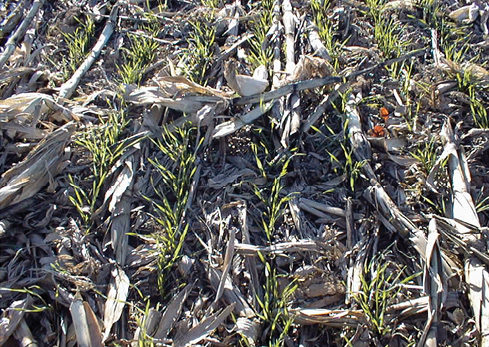No-Till Farmer
Get full access NOW to the most comprehensive, powerful and easy-to-use online resource for no-tillage practices. Just one good idea will pay for your subscription hundreds of times over.

When it comes to no-tilling winter wheat, there’s no cookie-cutter approach to making it work, says University of Kentucky researcher Lloyd Murdock.
But through more than 20 years of researching the crop in Kentucky, Murdock and the university identified a number of key practices no-tillers should examine to potentially maximize wheat stands, emergence and yields.
“Every time you change soil types and climates, you’ve got to change your practices and make it work,” Murdock told attendees at the 2012 National No-Tillage Conference.
Murdock says no-tilling wheat can lead to some stand reductions. In one 9-year study, researchers found that with a seeding rate of 32 viable seeds per square foot, no-tilled fields yielded an average stand of 27.4 plants an acre, compared to 29.5 for conventional fields.
To combat this, the university suggests no-tillers increase their seeding rate by 10%.
Murdock says there are sometimes “football-shaped ovals” of imperfect stands in no-tilled wheat fields, but he and other researchers have measured and counted the number of tillers, heads and seeds in the head, as well as weighed the seeds, and documented prolific tilling around the hole that makes up the difference.
“And it’s mainly in the number of seeds per square foot,” he says. “You’re going to have problems sometimes with stands. It’s not going to be that bad, but you’re going to have problems, and the more prolific the tillering that you put in your variety, the better off you will be.”
Murdock suggests planting 35…